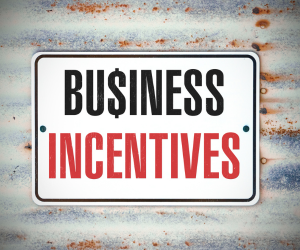Shining Light on LED Rebates and Incentives: Brightening the Path to Energy Efficiency

In today’s world, where sustainability is becoming increasingly vital, the shift towards energy-efficient technologies is not just a choice but a necessity. Among these technologies, LED lighting stands out as a beacon of efficiency, offering significant energy savings and environmental benefits. However, the initial cost of upgrading to LED lighting can sometimes deter individuals and businesses from making the switch. That’s where LED rebates and incentives come into play, illuminating the path towards a greener and more cost-effective future.
The Brilliance of LED Lighting
Before delving into the world of rebates and incentives, let’s shed some light on why LED lighting is worth the investment. LED, or Light Emitting Diode, lighting is revolutionizing the way we illuminate our homes, offices, and streets. Unlike traditional incandescent or fluorescent bulbs, LEDs consume significantly less energy while producing the same or even higher quality of light. This translates into reduced electricity bills and lower carbon emissions, making LED lighting a win-win solution for both your wallet and the planet.
LEDs also boast an impressive lifespan, lasting up to 25 times longer than traditional bulbs. This longevity not only saves money on replacement costs but also reduces the environmental impact associated with manufacturing and disposing of bulbs frequently. Additionally, LED lights are durable, resistant to shock and vibration, and do not contain hazardous materials like mercury, making them safer to use and dispose of.
The Power of Rebates and Incentives
Despite the numerous benefits of LED lighting, the upfront cost of upgrading can be a barrier for many consumers and businesses. This is where rebates and incentives offered by governments, utilities, and other organizations come into play. These programs aim to encourage the adoption of energy-efficient technologies by providing financial incentives to offset the initial investment.
Rebates typically come in the form of cash-back offers or discounts on the purchase of qualifying LED products. These can vary depending on factors such as location, the type of LED product, and the energy savings it delivers. Incentives, on the other hand, may include tax credits, grants, or low-interest loans designed to further incentivize energy-efficient upgrades.
Navigating the Rebate Landscape
Navigating the landscape of LED rebates and incentives can seem daunting at first, but with a little guidance, it’s easier than you might think. Many utility companies offer rebate programs for customers who upgrade to energy-efficient lighting, so it’s worth checking with your local provider to see what incentives are available in your area. Additionally, government websites and energy efficiency organizations often provide resources and databases to help you find applicable rebates and incentives based on your location and the products you’re interested in.
When considering LED lighting upgrades, it’s essential to look beyond the immediate cost and consider the long-term savings and environmental benefits. By taking advantage of rebates and incentives, you can make the switch to LED lighting more affordable and accelerate the journey towards a more sustainable future.
Conclusion: A Brighter Tomorrow
LED lighting represents a significant opportunity to reduce energy consumption, lower utility bills, and minimize environmental impact. With the help of rebates and incentives, making the switch to LED has never been more accessible or more rewarding. By taking advantage of these programs, individuals and businesses can not only save money but also contribute to a cleaner, greener planet for generations to come. So let’s embrace the brilliance of LED lighting and illuminate the path towards a brighter tomorrow.
